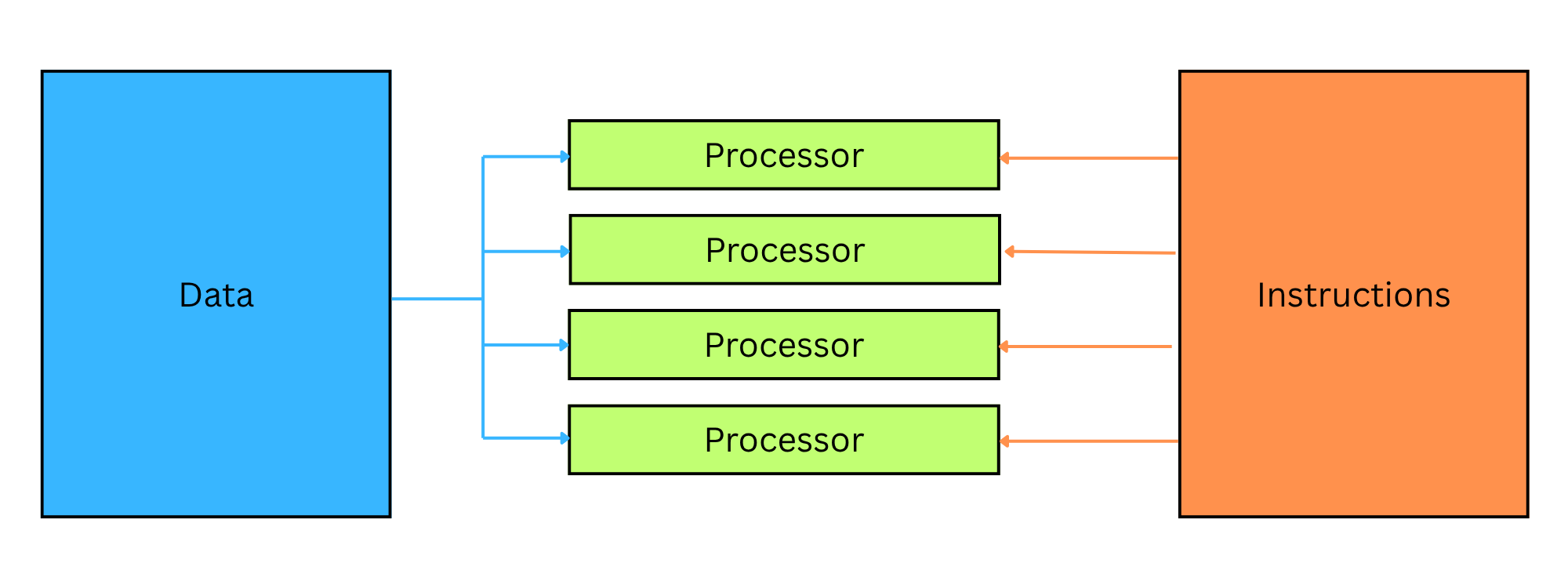Computer Architectures (Cambridge (CIE) A Level Computer Science): Revision Note
Exam code: 9618
Architecture types
What is a computer architecture?
A computer architecture is the design and structure of a computer system
It describes how it fetches, processes, and stores data and instructions
It defines how components like the CPU, memory, and input/output devices work together to execute programs
Each architecture is categorised as:
Single or Multiple Instruction stream
Single or Multiple Data stream
SISD – Single Instruction, Single Data
Description | Key Features |
|---|---|
One processor executes one instruction on one data stream at a time | Traditional serial (non-parallel) architecture |
Used in basic, single-core processors | Step-by-step processing |
Example: Classic desktop CPU running one task at a time

SIMD – Single Instruction, Multiple Data
Description | Key Features |
|---|---|
One instruction is applied to multiple pieces of data at once | Useful for parallel processing |
All processing units perform the same operation in parallel | Ideal for graphics or scientific computation |
Example: GPU operations, image processing

MISD – Multiple Instruction, Single Data
Description | Key Features |
|---|---|
Multiple processors execute different instructions on the same data | Very uncommon in practice |
Used in specialised systems for fault tolerance | Each unit checks the same input differently |
Example: Redundant systems in safety-critical environments

MIMD – Multiple Instruction, Multiple Data
Description | Key Features |
|---|---|
Multiple processors execute different instructions on different data sets | Most modern multi-core processors use this model |
Allows full concurrent processing of independent tasks | Flexible and scalable for parallel programs |
Example: Multi-core CPUs, distributed systems, cloud computing

Summary table
Architecture | Instruction Stream | Data Stream | Used In |
|---|---|---|---|
SISD | Single | Single | Standard sequential processors |
SIMD | Single | Multiple | Vector processing (e.g. GPUs) |
MISD | Multiple | Single | Specialised fault-tolerant systems |
MIMD | Multiple | Multiple | Multi-core processors, parallel systems |

Unlock more, it's free!
Did this page help you?